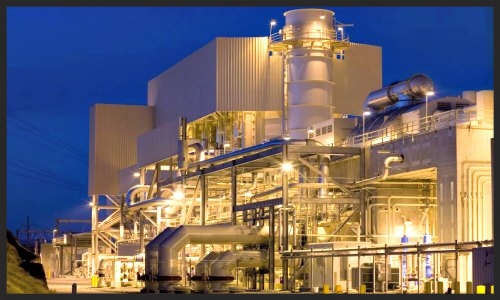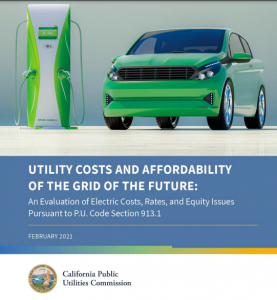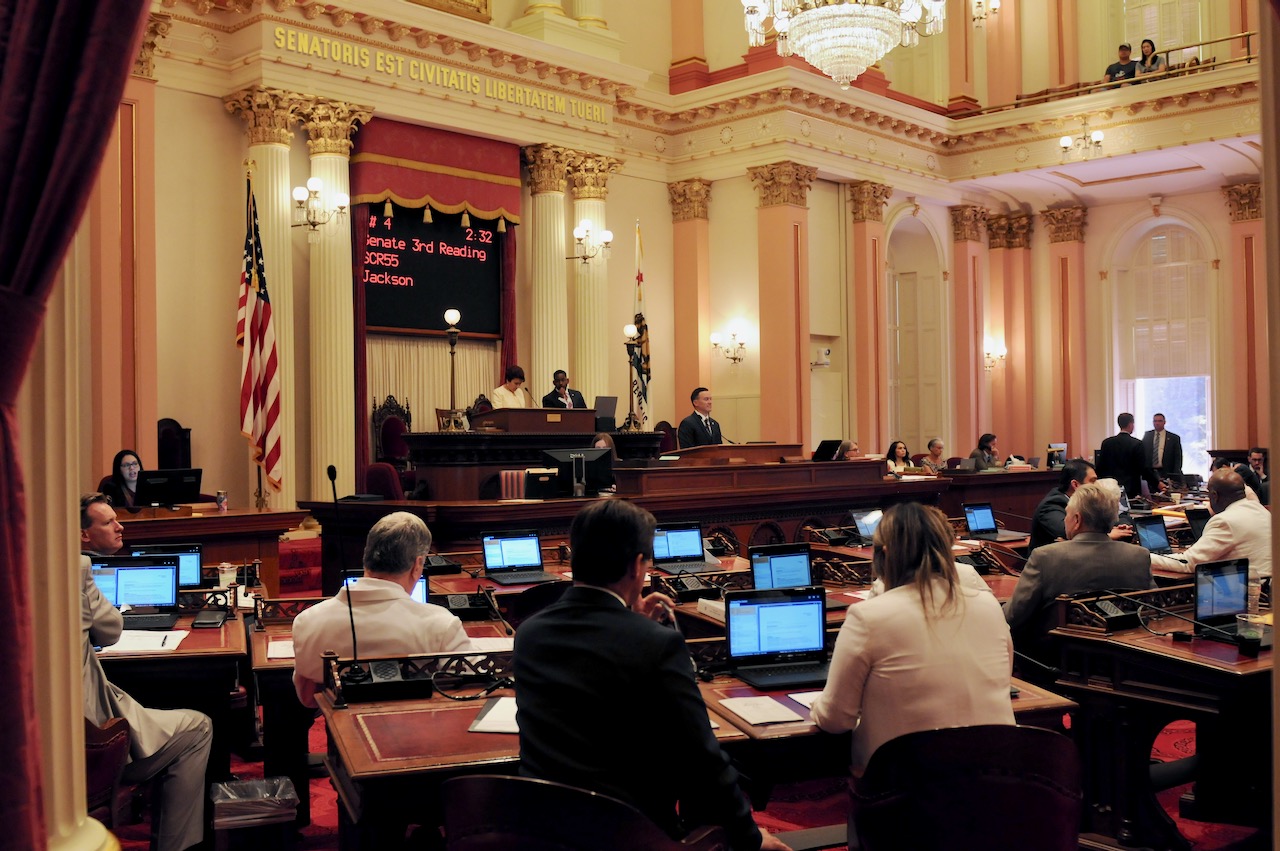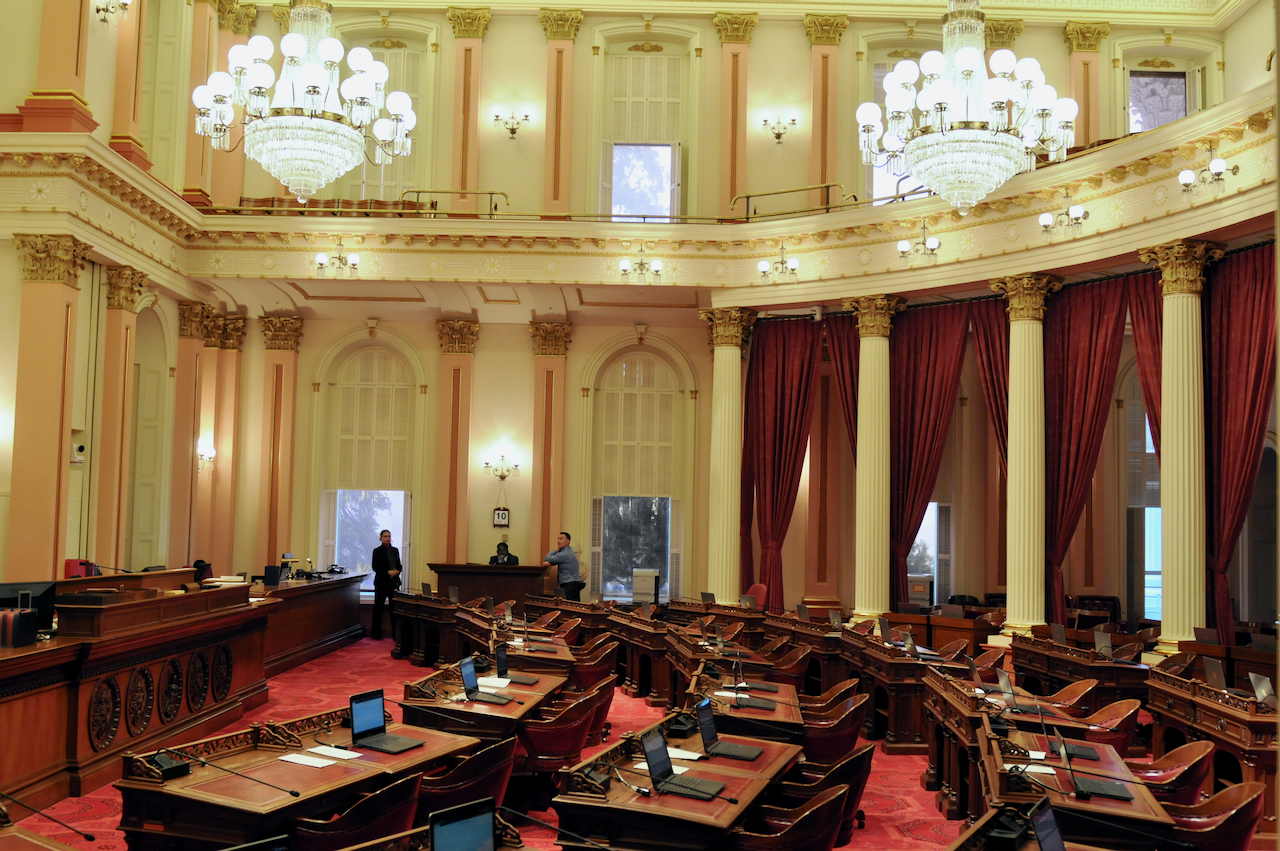
Palomar Energy Center. (Photo: San Diego Gas and Electric)
EXCLUSIVE: Millions of Californians’ Unpaid Utility Bills Total $1.25 Billion Due to Lockdown
‘Every billion in spending translates into a 7% rate increase to the ratepayer’
By Katy Grimes, March 3, 2021 12:41 pm
While 3.3 million Californians have unpaid utility bills totaling $1.25 billion due to “COVID pandemic impacts,” the California Public Utilities Commission at a meeting last week discussed their recent white paper exposing that since 2013, private utility bills have exceeded the annual inflation rate of 1.9%. In just the last seven years, San Diego gas and Electric’s utility rates increased 48%, Pacific Gas and Electric’s increased 38% and Southern California Edison’s increased 6%.

The Globe met with Jesus Arredondo, energy and regulatory expert, and the Principal of Advantage Consulting. He said the CPUC hosted an Energy Rates and Costs En Banc (in full court) last week that centered around themes and concepts raised in their White Paper, Utility Costs and Affordability of the Grid of the Future – California electric and gas cost and rate trends over the next decade. (paper is below)
“The white paper warns that the burden of continually rising utility bills will likely derail California’s decarbonization work if left unaddressed,” Arredondo said. “Worse, the rising costs are hitting customers who’ve been hit hard by pandemic-driven job losses and sheltering at home the hardest.”
California’s “decarbonization work” is the state’s and CPUC’s flawed scheme to reducing greenhouse gas emissions through moving to an all-electric grid, away from oil and gas, coal, hydroelectric and nuclear power.
Arredondo said at the hearing, CPUC Deputy Executive Director Ed Randolph, said that the work to advance transportation electrification and all electric homes could result in “… energy unaffordability in parts of the state.”
Think about that: “energy unaffordability” is already hitting in many parts of the state.
“We are going to hit an inflection point where energy will be so expensive because the good-idea fairies tried to rescue the world with renewable energy,” Arredondo said. “Unfortunately, the take a ‘more tempered’ approach recommendations were ignored.”
Assembly Utilities & Energy Committee Chair, Assemblyman Chris Holden (D-Los Angeles), said the State must ensure its energy system is clean, safe, and affordable, but warned the idea that the “grid will be either reliable or clean is a false choice.” Holden called for creating a western-wide grid to lower utility bills and help decarbonize the system, Arredondo said. Two years ago, Holden introduced legislation to create a regional grid but was unsuccessful. Opponents feared it would slow in-state renewable development and jobs, Arredondo said.
“While much of the focus at the daylong hearing was on the impacts of rates continuing to escalate over this decade, Mike Campbell with the Commission’s Public Advocates Office stressed that we are now in the midst of a rate crisis.”
With the white paper exposing private utility bills exceeding the annual inflation rate of 1.9% over the last seven years, with SDG&E’s rates increasing 48%, PG&E 38% and SCE 6%, just since 2013, there clearly is a rate crisis.
Arredondo reported:
At the En Banc hearing, Severin Borenstein, UC Berkeley Professor of Business Administration and Public Policy and CAISO Board member said that what utilities charge for energy is “way above its costs.” Much of the rate increases, he said, are for fixed charges. He suggested instead of raising rates to impose a tax to cover private utilities growing costs, from transmission to wildfire reduction work. That tax, he said, should be higher on those with more income to help protect low-income customers. The latter lack rooftop solar and other technologies to reduce their energy use, resulting in them bearing a great share of the fixed costs because charges are based on the amount of power consumed from the grid.
Other proposed strategies pitched for lowering electricity rates and protecting low-income customers is to tap into the state general fund money to cover rising costs. Having utilities use ratepayer-backed bonds to cover their rising costs, as they are doing for wildfire capital costs and loss of income from the pandemic, however, is not seen as a solution.
Average annual bundled rates are expected to rise: PG&E 5.3%, SCE 0.8%, and SDG&E 6.8%.
Arredondo said the paper highlighted that the utilities’ costs of capital, which includes transmission and distribution investments and low-income subsidies, also continue to rise – a total of 38% between 2016 and 2021.
The rate of return and profit margins for the private utilities is more than 10% on their returns on their investments: Southern California Edison 10.3%, PG&E 10.25%, SDG&E 10.2%, and 10.05% for SoCalGas.
While the Legislature has passed several COVID relief bills, none of what they have proposed – government grant programs, tax amnesty, licensing and fee waivers, emergency relief for low-income students, and stimulus payments – addresses the ever-increasing utility bills, or how the $1.25 billion in unpaid utility bills will be paid – or bailed out.
Arredondo noted, “the more regulations you impose on utilities, the higher rates go up. Every billion in spending translates into a 7% rate increase to the ratepayer.”
Feb 2021 Utility Costs and Affordability of the Grid of the Future
- AG Bonta Promotes California’s ‘Migrant Community’ Over California Citizens - December 20, 2025
- HHS Acts to Bar Hospitals from Performing Sex-Rejecting Procedures on Children - December 19, 2025
- Top 50 Disasters Gov. Gavin Newsom Has Ushered into California: 2025 Edition - December 17, 2025





“CPUC Deputy Executive Director Ed Randolph said that the work to advance transportation electrification and all electric homes could result in ‘… energy unaffordability in parts of the state.'”
That’s the understatement of the year! So far, anyway.
Looks like this is how these renewables and switch-to-electric people are going to impoverish the average CA resident, if they haven’t already, and maybe they have with COVID as the last blow. You can’t reason with these people. I’ve been to their meetings and they make no sense, they never have, and they never will. They don’t listen, they’re like fanatics following a new age religion on one hand or just plain sociopathic thieving politicians on the other. Each time I check in again to hear what they have to say they get worse, they have no conscience, they are going to impoverish the state eventually with this nonsense and it won’t be pretty. Prohibitively expensive unreliable power from so-called renewables is simply not working, but that doesn’t matter to this crowd.
Comrades
Facism is working just peachy fine….the Commissars have weened off the serfs from paying the most necessary life sustaining needs…… the future….a desperate political move toward “ universal need-come”.
Of course, you get nothing Neanderthals-
All the new “undocumented” coming here will help pay it right?
Imagine how many are the lowered bills which makes others pay for them
No wonder PG&E filed bankruptcy! over regulation and no new infrastuture for future housing such as Natural gas lines which are the cheapest energy you can get! If natural gas is bad for the environment then why have we had gas stoves in our enclosed homes for the last 100 years!!
Exactly! We know they don’t like nuclear, of course, which leaves a big hole if the proper functioning of a populous state is one’s goal, but they also HATE natural gas. Why? They also HATE hydroelectrical power, which really makes no sense. Then on the heels of that they absurdly want to go all-electric. What?
I’ve seen some of the local environmentalist virtue-signalers serving on city commissions with my own eyes. They seem to think renewables operate on good intentions and fairy dust. They don’t have a clue about the nuts and bolts of power transmission and where it comes from. They are ignorant about the damage wind turbines do, both in trashing the environment with tons of rusting metal waste when the turbines quit working as well as their role in killing off the bird population. (Huh? I thought you guys liked birds.) They think wind turbines are beautiful instead of ugly. They don’t understand that solar panels must be cleaned and maintained for them to work (and the sun must shine) nor do they understand that a vast amount of land is needed for a solar array (or wind turbines) to replace the stuff on their “bad” list. They apparently also don’t understand that renewables need transmission lines too, or they are in denial about it. They yell and scream when transmission lines for renewables must go through “protected” lands.
And the cost? Who cares about the cost? It’s worth it, they say.
The insanity never ends.
The same situation exists in Colorado :
https://www.fortmorgantimes.com/2021/03/04/colorado-consumers-behind-on-utility-bills/
And the “decarbonization” of California is a trigger word for “Get the heck outta Dodge before the economy implodes”